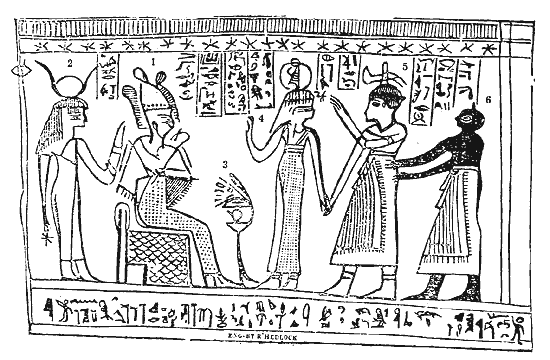
|
No. 3

|
설명
EXPLANATION
그림 1. 왕의 호의로 바로의 보좌에 앉아 있는 아브라함. 하늘의 위대한
회장단의 상징으로서 신권을 나타내는 면류관을 머리에 쓰고 손에는 정의와 심판의
홀을 들고 있음.
Fig. 1. Abraham sitting upon Pharaoh’s throne, by the
politeness of the king, with a crown upon his head, representing the Priesthood,
as emblematical of the grand Presidency in Heaven; with the scepter of justice
and judgment in his hand.
그림 3. 사본 1의 그림 10에도 나타나 있는 것과 같이
애굽에서의 아브라함을 의미함.
Fig. 3. Signifies Abraham in Egypt as given also in Figure
10 of Facsimile No. 1.
그림 5. 왕의 시종장 중의 하나인 슐렘. 그의 손 위에 있는 문자가 나타내
주고 있음.
Fig. 5. Shulem, one of the king’s principal waiters, as
represented by the characters above his hand.
아브라함이 왕의 궁정에서 천문의 원리를 강론하고 있음.
Abraham is reasoning upon the principles of Astronomy, in
the king’s court.